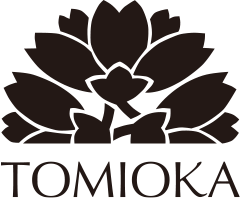Kabazaiku was published in the morning edition of the Yomiuri Shimbun on Tuesday, November 15, 2022.
Mr. Keitaro Arakawa, a traditional craftsman, and Tomioka, our representative, answered the interview.
ーーーーーーーーーーーーーーーーーーー
Full article below
Akita's handiwork
A hot metal trowel is submerged in a bowl of water. "Joo". At the Kakunodate Birch Crafts Museum (Kakunodate-cho, Semboku City, Akita Prefecture), traditional craftsman Keitaro Arakawa (46) confirmed the sharp sound of water and pressed a trowel against the bark of a birch tree.
In the process of making “tea canisters”, which is said to be synonymous with kabazaiku, it is the work of pasting together the bark that has been coated with glue. If the heat is not enough, it will not bond, and if it is too hot, the bark will burn. Mr. Arakawa judges the optimal temperature by the sound of splashing water.
“If the iron is hot, it will make a high-pitched sound. Mr. Arakawa explained so and carefully stretched the birch so that it would not wrinkle.
After graduating from high school, Arakawa became an apprentice to his father Keiichi, a traditional craftsman. “I was also a craftsman and (Kabazaiku) was familiar to me.
The material used for kabazaiku is not actually birch, but wild cherry tree bark. It is said that the ancient word ``Kani ni'', which means the skin of cherry blossoms, changed to ``Kaba''.
It is characterized by its toughness, which has been used as a reinforcing material since the Jomon period, and its reddish-purple color with a sour luster. When the rough surface of the bark is polished, patterns called "golden", "silver", and "crepe" emerge. Mr. Arakawa says, "When I shaved it, I made an unexpected discovery that 'it was this color.'"
The philosopher Soetsu Yanagi, who advocated the "folk art movement" to find fire in everyday items, also visited to give guidance.
Kabazaiku has faced various difficulties. During the Tempo famine, rice prices soared, and sales stopped. After the war, many unemployed people entered the manufacturing industry, and "bad products" were on the market. And now, due to changes in lifestyle, the number of Japanese-style rooms that match the Japanese atmosphere of cherry bark is decreasing.
Kabazaiku has overcome these challenges with its advanced technology and the creation of products that match the times. Hiroki Tomioka, president of "Tomioka Shoten", which manufactures and sells the products, says, "We started to combine white wood and different materials to match modern houses."
The company is focusing on overseas expansion to cultivate new demand. Participated in the international trade fair in Frankfurt, Germany since 2012. When I exhibited trays and other items co-produced with "Odate Magewappa", the deal was decided at the first store opening. President Tomioka recalls, "There is an image that Japan is equal to cherry blossoms. The contrast between the cherry bark and the Akita cedar must have caught my eye."
Aiming to further strengthen the brand in Europe, promote it as an eco-friendly product that uses natural materials. “Kabazaiku is a unique craft in the world.
It is made by gluing and carving the bark of Kabazaiku Yamazakura.
Taking advantage of its toughness and resistance to moisture, it is used in daily necessities such as tea caddies and small items.
It is said that the technique was brought to Kakunodate from the Dojin region of Kitaakita City in the middle of the Edo period. Seals and gunpowder cases were made as side jobs for samurai. There is also a record that it was ordered by the feudal lord as a gift to the feudal lord. After the war, about 1,000 people, half of the city's working population, were employed.

Mr. Arakawa says, "We have to publicize Kabazaiku widely and increase its name recognition."

